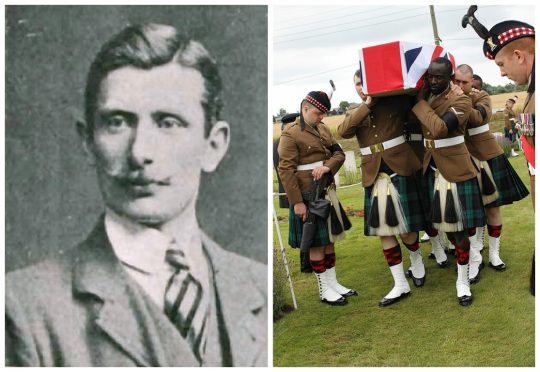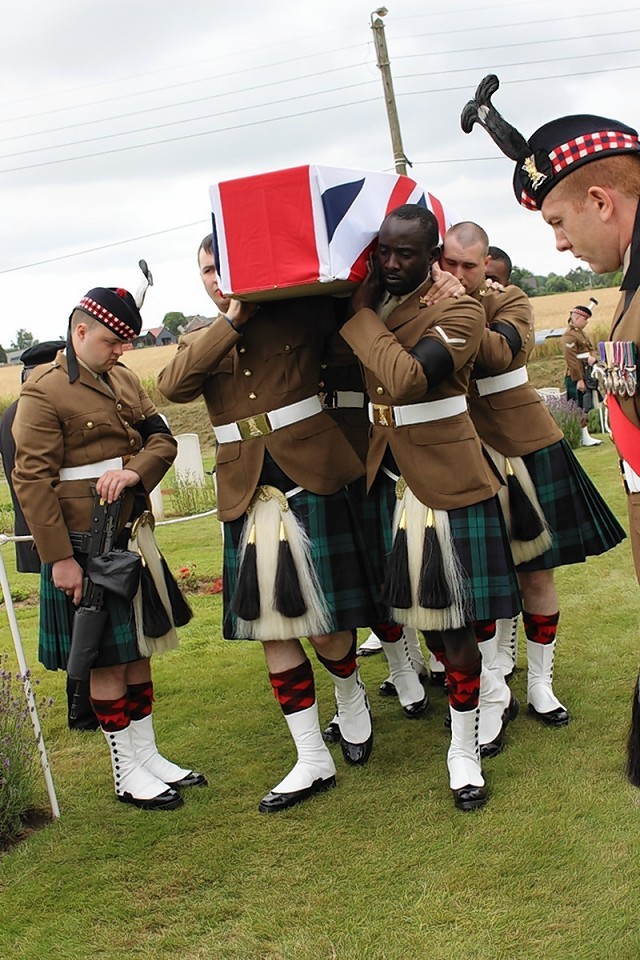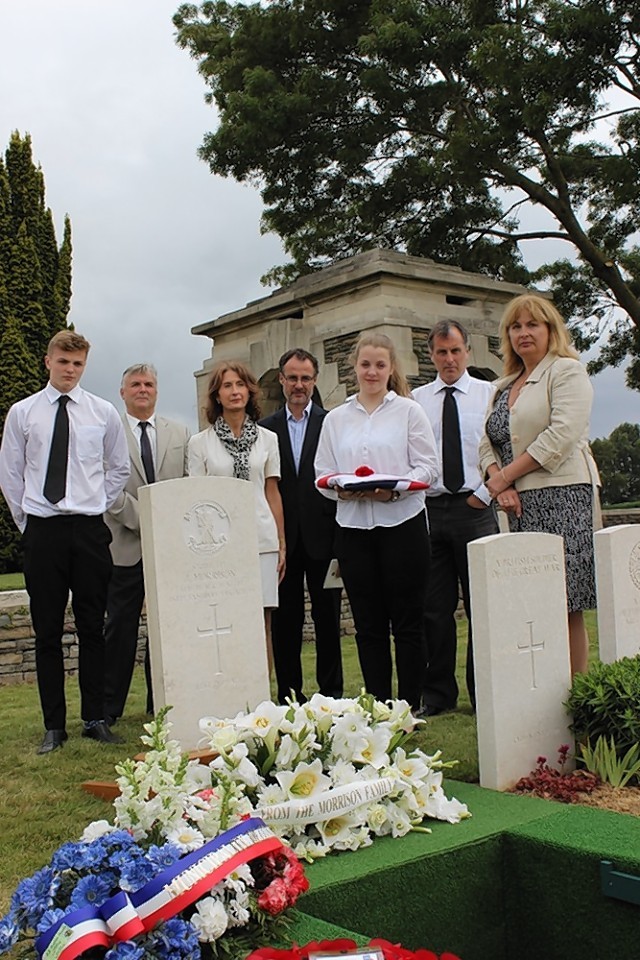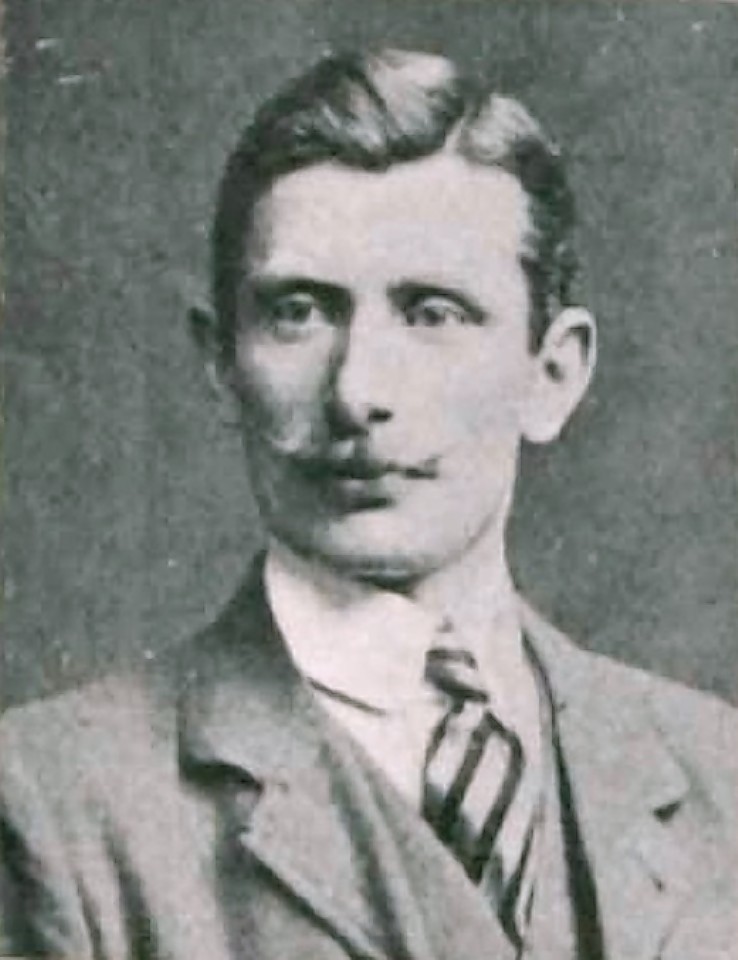A Moray soldier who was identified 100 years he was killed in World War I has been buried with full military honours.
The remains of Lance Corporal John Morrison were discovered in France two years ago, and DNA tests were carried out to trace his nearest living relatives.
Yesterday, L-Cpl Morrison’s descendants travelled from Forres and Dingwall to a cemetery in the north of France – near to where his remains were discovered – for the emotional service.
They learned that he had managed to crawl to the assistance of a comrade, despite being wounded so badly that he later died.
Accounts from the time described L-Cpl Morrison as a “gallant fellow”, who was one of his commanding officers’ “most valued men”.
The soldier was born in Tomintoul in 1885, and grew up at the Brodie Castle Estate, where his father worked as gamekeeper.
He enlisted at the outbreak of war in 1914, and joined the 1st Battalion of the Black Watch (Royal Highlander Regiment) upon his arrival in France that December.
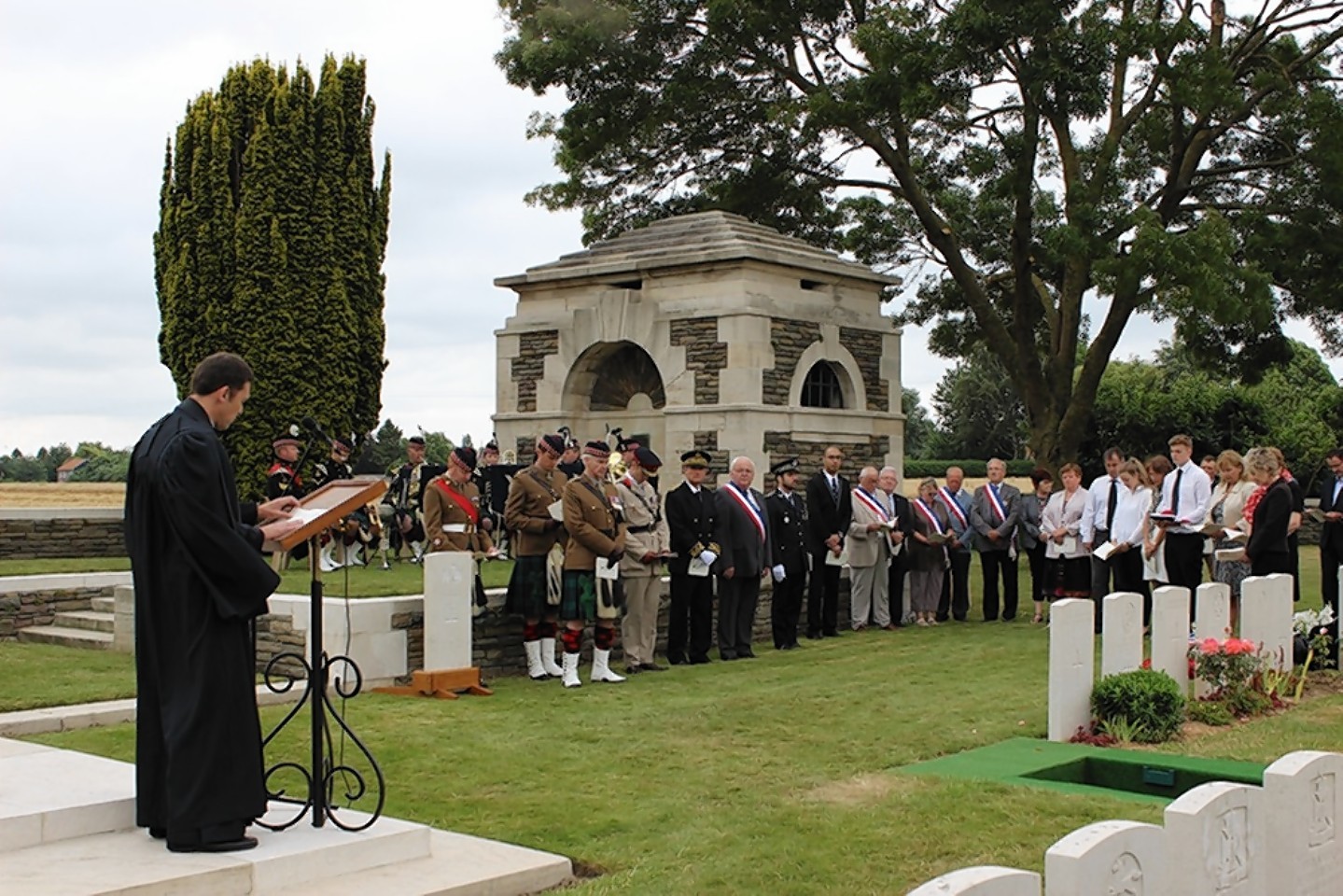
L-Cpl Morrison was killed in January 1915, aged 29, during hours of bitter fighting.
His remains were found at Cuinchy, near Arras, in December 2014.
He was discovered with a spoon which had been engraved with his service number and which provided a vital clue in determining his identity.
He was buried yesterday morning at the Woburn Abbey military cemetery in the Cuinchy region.
The service was led by Black Watch chaplain Reverend Stewart Mackay, and current members of the Black Watch, 3rd Battalion (the Royal Regiment of Scotland), paid a solemn tribute to L-Cpl Morrison by bearing his coffin and performing a gun salute.
Speaking after the ceremony, the fallen serviceman’s great-niece, Eilidh Rennie, said her family had been “very impressed” with the work the Ministry of Defence had performed in identifying L-Cpl Morrison and uncovering the circumstances of his death.
She added: “This has provided us with some hitherto unknown family history.
“We are very grateful for the full ceremonial burial in the military cemetery.”
A new headstone bearing L-Cpl Morrison’s name has been installed at the cemetery, which will be cared for by the Commonwealth War Graves Commission in perpetuity.
L-Cpl Morrison’s final moments
During yesterday’s ceremony, the circumstances surrounding L-Cpl Morrison’s dying moments were revealed.
The soldier’s descendants and his modern day military counterparts gathered by his graveside as the selfless nature of his sacrifice was recounted.
They learned that he was fatally shot while helping an injured colleague.
L-Cpl Morrison had been called in to reinforce the British Army line at Cuinchy, and 58 of his Black Watch regiment also died during hours of intense fighting that followed.
After his death, his parents in Moray received a letter from one of his comrades describing his last moments.
The letter said: “The attack was fierce and John got a bullet in the leg.
“Nevertheless, he crawled to the assistance of his officer, also wounded, and was in the act of helping him to remove his pack when he was fatally shot.”
The officer concerned, 2nd Lieutenant Lewis Willett, elaborated further in a separate letter to L-Cpl Morrison’s brother.
He said: “Some gallant fellow crawled up to me shortly after I was hit, and attempted to assist me off with my pack, but owing to the nature of my wound, I was unable to turn my neck sufficiently around to see who it was.
“I heard he was hit, and asked him if it was so.
“He replied: ‘Yes Sir’ and when I inquired later, I received no reply, but could just touch his hand by reaching back, and found he was dead.
“From the sound of his voice I thought it was your brother, who was in my platoon, and I hoped it wasn’t so, and that I had made a mistake, for he was one of my most valued men.”
He added: “His end was a gallant one.”
